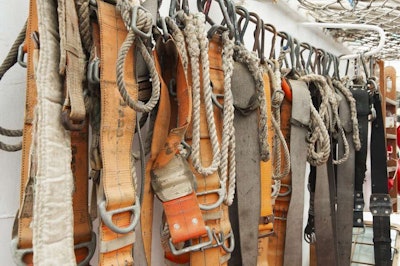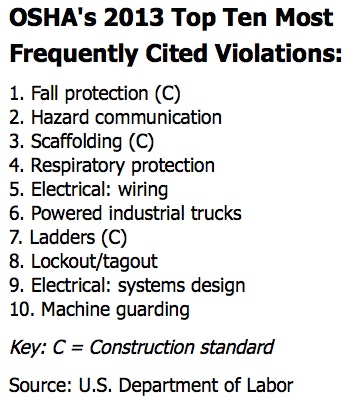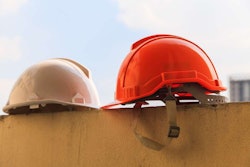
More than 1 million workers from tens of thousands of businesses are expected to take part in the Occupational Health and Safety Administration’s (OSHA) National Fall Safety Stand Down this week.
Throughout the week-long Stand-Down, employers and workers will pause during their workday to focus on the hazards of falls and preventing them. Industry and business leaders, including universities, labor organizations and community and faith-based groups, have scheduled stand-downs in all 50 states and across the world.
Falls are the leading cause of death in the construction industry, with hundreds of workers dying each year and thousands more facing serious injuries, according to the U.S. Department of Labor.

Lack of fall protection is also the most frequently cited OSHA violation, which really boils down to the fact that these deaths are preventable when employers provide the right safety equipment and properly train workers how to use it.
Throughout this week, “a record number of companies and workers around the country” are voluntarily stopping work to talk about fall prevention, according to the DOL. The government agency is encouraging Stand-Down participants to share their experiences on Twitter by using #StandDown4Safety and tagging @USDOL.
U.S. Secretary of Labor Thomas E. Perez says everyone has banded together to join the campaign “to save lives and prevent fatal falls in the construction industry.”
Perez says the economy is on the rebound, housing starts are on the rise and the summer construction season is getting underway.
“Now is the time to focus on this vital safety issue and make sure all construction workers come home at the end of every workday,” Perez says in a written statement.
Hear Perez discuss the Stand-Down in the included video.
Some participants in this initiative, the DOL says, include the following:
-
University of Texas at Arlington joined OSHA staff and Balfour Beatty Construction to kick off events across the state of Texas.
-
Clark Construction Group LLC has plans to host a stand-down at the Stanford University Medical Center in Palo Alto, Calif.
-
On Wednesday, June 4, NASCAR race car driver Greg Biffle will be at the Daytona International Speedway in Daytona Beach, Fla., to demonstrate fall protection at the facility, which is currently under construction.
-
The U.S. Air Force will be hosting fall stand-downs at bases worldwide.
Assistant Secretary of Labor for Occupational Safety and Health Dr. David Michaels points out that “falls cause immense pain and suffering when they happen, and we must do everything we can to stop them.”
However, he says, “the good news is that they are preventable with three easy steps: the best protection is to plan ahead, ensure workers have the right equipment and train each worker to use it.”
It’s great to see such a strong stance on safety. I’ll be teaching my boys about transportation safety on Thursday evening. (Our local Safety Town is having a practice bike ride on its enclosed streets to teach children about safely navigating the roadways on their bikes.)
Note: This week’s National Safety stand down is part of OSHA’s fall prevention campaign, launched two years ago with the National Institute for Occupational Safety and Health, NIOSH’s National Occupational Research Agenda and The Center for Construction Research and Training.
Here is some useful information from the DOL:
The National Safety Stand-Down web page provides details on how to conduct a stand-down; receive a certificate of participation; and access free education and training resources, fact sheets and other outreach materials in English and Spanish.
For a list of stand-down events free and open to the public, visit the Stand-Down calendar of events. This is not a comprehensive list of all events taking place across the country.
Under the Occupational Safety and Health Act of 1970, employers are responsible for providing safe and healthful workplaces for their employees. OSHA’s role is to ensure these conditions for America’s working men and women by setting and enforcing standards, and providing training, education and assistance.










